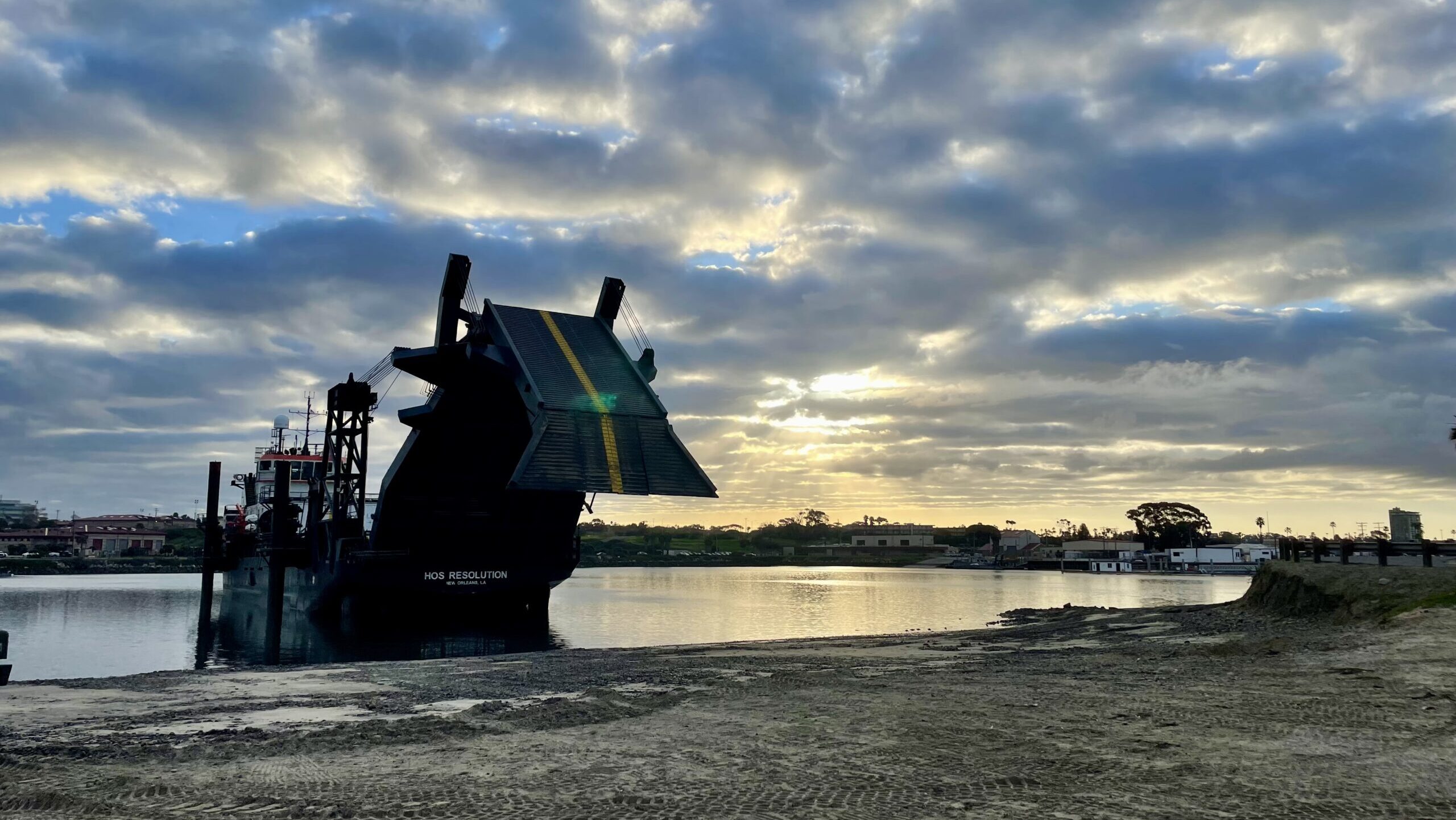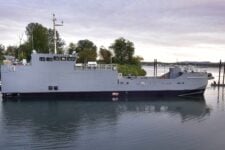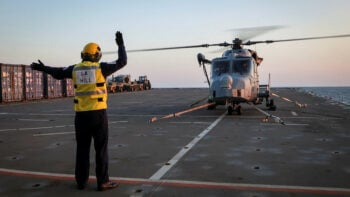
During sunrise on March 1 at Camp Pendleton, the USMC lowered the ramp of its first stern landing vessel prototype. (Ashley Roque/ Breaking Defense)
WASHINGTON — Roughly five years after then-Marine Corps Commandant Gen. David Berger first proposed his “Light Amphibious Warship” concept, that ship’s spiritual successor, the Medium Landing Ship (LSM), is formally part of the Navy’s fiscal year 2025 budget request.
The program’s inclusion in the Navy’s shipbuilding budget, and by extension the budget justification documents published late Monday night, provides a first glimpse at the projected timeline and funding investments the Navy plans to make into the ship the Marines hope will one day help them shuttle personnel and equipment through the first island chain.
Front and center in the budget justification documents, which the Pentagon also calls the “j-books,” is the production cadence: One ship purchased in FY25 and FY26, followed by two ships per year throughout the current future years defense program ending in FY29. The requested funding for FY25 is $268 million with future years’ requests gradually ramping up to above $300 million in FY28 and FY29.
Medium Landing Ship “is designed to fill the gap in capability between the Navy’s large, multipurpose amphibious warfare class ships and smaller landing vessels. This ship will deploy tailored logistics, select power projection and support strike capabilities via the embarked [Marine Littoral Regiment],” according to the j-books.
In terms of size, LSM is expected to be 400-feet long, have a beam of 55 feet, displace 2,522 long tons and have a 12-foot draft. Marine Corps leadership has previously stated the service will need at least 35 ships — nine per each Marine Littoral Regiment plus a handful of extras expected to be in maintenance availabilities at any given time — to meet its requirements.
Who in industry will build LSM is still an open question. The Marine Corps began the formal request for soliciting proposals earlier this year and will spend much of 2024 receiving and evaluating potential offers. A contract to the chosen shipbuilder is anticipated for award in March 2025 and the first ship will be due for delivery roughly four years later in February 2029, according to the new budget documents.
As with all big Pentagon acquisition programs, the initial timelines are always subject to change based on budget fluctuations, lead ship design and construction problems, and other mishaps the Pentagon may or may not be able to control. But the plans laid out when a program first enters the j-books, otherwise dubbed as a “new start,” present the clearest representation of the Navy’s baseline expectations.
Berger first introduced the “Light Amphibious Warship” concept in 2019 when he became the top Marine Corps officer. It was one of several revamps as part of the larger Force Design 2030 effort that has stirred criticism among retired Marine Corps general officers.
Since that time, the Marine Corps has experimented with a Stern Landing Vessel as a precursor to LSM to help refine the requirements, including most recently at Camp Pendleton in California as part of the US Army’s Project Convergence demonstrations.
“There’s a demand and there’s a need to be able to move things in and around the Pacific because primarily what makes things different in the Pacific than anywhere else we’ve operated recently is the fact that it’s predominantly water,” Jeff Tomczak, a senior civilian at the Marine Corps’ Warfighting Laboratory, told reporters in February 2023 about experimentation efforts with SLV.






















